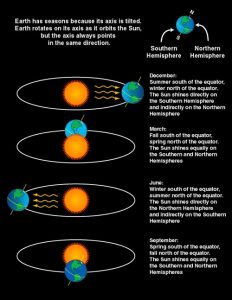What does the coming of fall equinox mean
September 19, 2021
(Courtesy of the National Weather Service)
There are only two times of the year when the Earth’s axis is tilted neither toward nor away from the sun, resulting in a “nearly” equal amount of daylight and darkness at all latitudes. These events are referred to as Equinoxes. We have a spring and fall equinox.
The word equinox is derived from two Latin words — aequus (equal) and nox (night). At the equator, the sun is directly overhead at noon on these two equinoxes.
This year, the autumnal event will be precisely on Sept. 22 at 2:21 p.m. CDT
The “nearly” equal hours of day and night is due to refraction of sunlight or a bending of the light’s rays that causes the sun to appear above the horizon when the actual position of the sun is below the horizon.
Additionally, the days become a little longer at the higher latitudes (those at a distance from the equator) because it takes the sun longer to rise and set.
Therefore, on the equinox and for several days before and after the equinox, the length of day will range from about 12 hours and six and one-half minutes at the equator, to 12 hours and 8 minutes at 30 degrees latitude, to 12 hours and 16 minutes at 60 degrees latitude.
Source: National Weather Service







